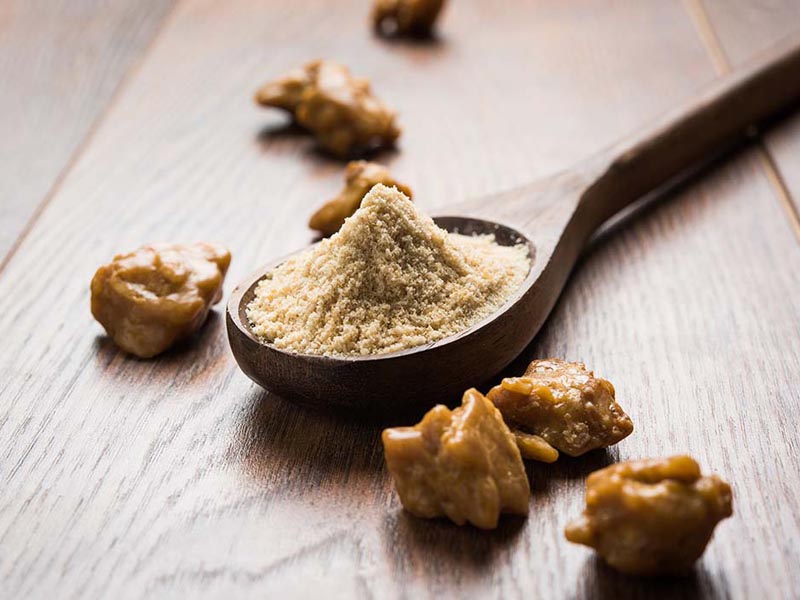In the last few months, spices have witnessed renewed popularity because of their immunity-building properties. Today I write about asafoetida, or the humble hing, a spice found in most Indian kitchens.
Asafoetida and the Flu
Asafoetida finds mention in the Charak Samhita, Ayurveda’s definitive text, where its many medicinal properties have been enumerated. During the Spanish Flu pandemic of 1918, it is said that people tied a small bag of asafoetida around their neck in order to stave off the infection. The United States Pharmacopeia (USP), among the most trusted organisations to sanction medication, also approved of this spice as a remedy for the flu. Several years later, when the Swine Flu broke out in Mexico, this spice was remembered for its antiviral properties. Lab tests demonstrated that asafoetida killed the swine flu virus as effectively as the antiviral drug being prescribed at that time.
Besides being a flu fighter, the role of hing as a digestive aid is well-established. It helps not just when you consume it, but also when you apply it! I refer to the practice of applying hing paste on the navel of a colicky baby to provide relief.
Hing in the Homeland
The pandemic is not the only reason to talk about asafoetida. Interestingly, India consumes almost half of the global produce of this spice. Yet, the first sapling of this spice was planted on Indian soil only a couple of weeks ago. Until now, India was importing all its asafoetida from Afghanistan, Iran, Uzbekistan and the cold deserts in the region.
A team from the Council of Scientific and Industrial Research (CSIR) has finally planted 800 saplings of ferula asafoetida in the cold and dry regions (Lahaul and Spiti) of Himachal Pradesh. This augurs well for the farmers in the region who have long struggled to cultivate food crops in the cold and arid conditions. Planted across 1,250 acres of land gives us hope that we may soon (not so soon, though, because the plant takes 4-5 years to grow, mature and release its precious sap) have our favourite spice locally grown. India’s annual consumption of asafoetida is about 1500 tonnes, costing no less than $130 million in foreign exchange.
The Wheat Factor
An interesting experience with this spice almost twenty years ago led to a curious discovery. I was surveying the market to identify foods that could be safely consumed by my patients diagnosed with Celiac Disease (CD). For this process, I was reading the food labels very intently. Much to my surprise, almost all the hing powders on the market listed wheat as an ingredient. Of course, I acted right away by asking the patients to exclude hing from their diet, and the result was as I had expected. Many of these patients had continued to struggle with the symptoms of CD despite excluding all gluten from their diet. However, once they eliminated hing, they felt much better.
So, why exactly was there wheat lurking in these hing powders? This is another instance of how the need for convenience has changed the form of food that we eat. Hing is a resin that used to be sold as a hard lump mixed with other edible gums before the powdered avatars became prevalent. In this compounded form, the resin remained a rigid lump that was difficult to break. It had to be softened before use by placing it on the lid of a steaming pot. Tiny bits were then broken away from the rock-like chunk, dissolved in warm water, and then used by sprinkling over the dish just before it was taken off the fire. However, if not dissolved right and you happened to chance upon an undissolved bit in your food, it would be quite an unpleasant experience.
In order to match the pace of modern day living, hing is typically sold in the powdered form mixed with wheat flour. Many brands use as much as 65% wheat in the mixture to keep the hing in the free-flowing powdered form. But, of course, a higher ratio of wheat flour makes this spice less concentrated and obviously comprises its quality. This has led to the revival of the purer form of hing in the powdered form. Superior quality hing can be quite expensive, costing up to Rs. 8000 per kg. Fortunately, all one needs is only a speck of this potent, pungent, sulphur-rich spice to flavour the food and reap its benefits.
 |
Ms. Neelanjana Singh, Nutrition Consultant & Author |


